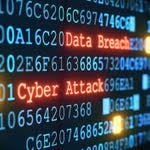Are There Standards for Quantum Cryptography? A Look at Securing the Quantum Future.
Quantum cryptography, leveraging the fundamental principles of quantum mechanics, promises a revolutionary approach to data protection. But can we simply plug this futuristic technology into existing systems? The answer lies in the crucial, and ongoing, development of standards for quantum cryptography.
This article delves into the fascinating realm of quantum cryptography, focusing on the efforts to establish standardized practices for quantum key distribution (QKD) and other quantum-resistant security measures. We’ll examine the current landscape, the key players involved in standardization, and the challenges and opportunities that lie ahead.
Why Quantum Cryptography and Why Standards Matter
Classical cryptography, the backbone of online security today, relies on mathematical algorithms considered computationally difficult to break with current technology. However, the development of powerful quantum computers threatens to render many of these algorithms obsolete. Quantum cryptography offers a fundamentally different approach, using the laws of physics to guarantee security.
Quantum Key Distribution (QKD) is a prime example. It allows two parties to establish a secret key by transmitting quantum states of light. Any attempt to eavesdrop on this transmission inevitably introduces disturbances detectable by the legitimate users, ensuring the key’s integrity. This key can then be used with traditional encryption algorithms, guaranteeing unbreakable communication.
However, without standardized protocols and definitions, the adoption of quantum cryptography will be hampered. Imagine a world where different QKD systems are incompatible or vulnerable to unforeseen attacks due to inconsistent implementations.
Standards provide a crucial framework for:
* Interoperability: Ensuring different quantum cryptographic systems can communicate and exchange data seamlessly.
* Security Assurance: Defining rigorous security requirements and testing methodologies to validate the resilience of quantum cryptographic systems.
* Market Confidence: Encouraging investment and adoption by providing a clear roadmap for development and deployment.
* Regulatory Compliance: Facilitating the integration of quantum cryptography into existing regulatory frameworks.
The Current Landscape: Standardization in Progress
While the field of quantum cryptography is still relatively young, significant efforts are underway to establish comprehensive standards. Several organizations are actively working to define best practices and specifications:
* International Organization for Standardization (ISO): ISO/IEC JTC 1/SC 27 is a leading force in information security standardization, and it’s actively developing standards related to quantum-resistant cryptography. This includes standards for:
* Quantum Key Distribution (QKD) protocols: Defining the technical specifications and security requirements for QKD systems.
* Quantum Random Number Generators (QRNGs): Establishing standards for the generation of truly random numbers based on quantum phenomena, essential for cryptographic applications.
* Post-Quantum Cryptography (PQC): Defining and standardizing classical cryptographic algorithms that are resistant to attacks from quantum computers.
* Institute of Electrical and Electronics Engineers (IEEE): The IEEE is also contributing to standardization efforts, particularly in areas related to the hardware and communication aspects of quantum cryptographic systems.
* European Telecommunications Standards Institute (ETSI): ETSI is focused on standardization for telecommunications and is involved in defining standards for QKD networks and their integration with existing communication infrastructure.
These organizations are working collaboratively, drawing on the expertise of researchers, industry experts, and government agencies, to develop robust and practical standards.
Challenges and the Implications of Rapid Technological Advancements
The development of standards for quantum cryptography is not without its challenges:
* Rapid Technological Evolution: The field is advancing rapidly. New QKD protocols, hardware implementations, and attack strategies are constantly being developed, requiring standards to be adaptable and future-proof.
* Complexity of Quantum Mechanics: The inherent complexities of quantum mechanics make it challenging to define precise and unambiguous specifications for quantum cryptographic systems.
* Quantum Computer Threat: The evolving threat posed by quantum computers necessitates a proactive approach to standardization. Identifying and mitigating potential vulnerabilities is crucial.
* Balancing Innovation and Standardization: Standards should promote innovation while ensuring security and interoperability. Striking this balance is a key challenge.
The implications of these challenges are significant. Without timely and effective standardization, the promise of quantum cryptography may be delayed or undermined. However, with coordinated efforts and a collaborative approach, we can pave the way for a secure quantum future.
Conclusion: Securing the Future with Quantum Standards
Quantum cryptography represents a paradigm shift in cybersecurity, offering the potential for unbreakable communication. The development and adoption of standards are essential to realizing this potential. While challenges remain, the ongoing efforts by organizations like ISO, IEEE, and ETSI are paving the way for a standardized and secure quantum future. As the technology matures and standards solidify, quantum cryptography will play an increasingly important role in protecting our data and securing our digital world.









